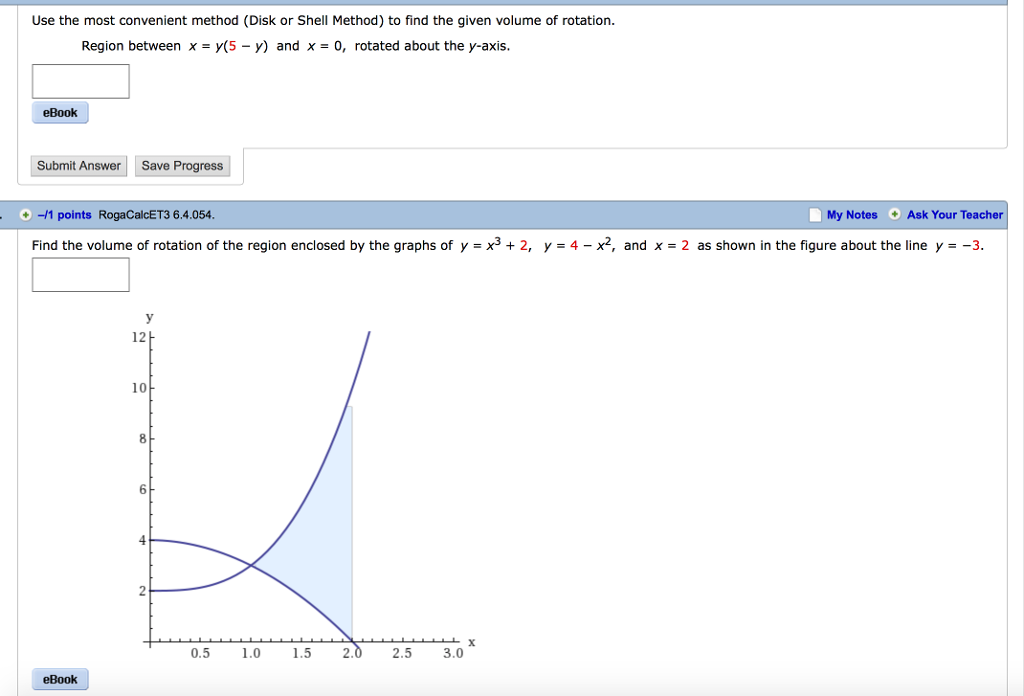
The same situation with horizontal elements near the bottom and top, but some elements between the top and bottom are bounded by yet other pairs of curves, so I need three or more integrals to get the volume using horizontal elements.Horizontal elements near the top of the region are bounded by a pair of curves, but horizontal elements near the bottom are bounded by a different pair of curves, so I'll need to write two integrals, one for the top of the region and one for the bottom.Horizontal elements near the top of the region are bounded by the same curve at both ends, so I would have to cut the curve into a "left" part and a "right" part with a different function for each.There are all kinds of situations that can come up that will make one way more complicated that the other, for example:

Then look at whether I would like to take vertical elements or horizontal elements. What I like to do is actually plot the curves and identify the region of the $x,y$ plane that they bound. (The amount of extra complexity you get by making the "wrong" choice seems not worth spending any time worrying about in this case you'll waste more time trying to decide than you would have spent doing the more "complicated" integral.) It turns out that either shells or washers will work for this problem, and with approximately equal complexity. $y = \sqrt x$ gives $y$ as a function of $x,$ but the same curve is described by $x = y^2$ where $y \geq 0,$ which gives $x$ as a function of $y$.$x = 4$ gives $x$ as a function of $y$ (which happens to be a constant function).$y = 0$ gives $y$ as a function of $x$ (which happens to be a constant function).For the purpose of applying the professor's advice,


 0 kommentar(er)
0 kommentar(er)
